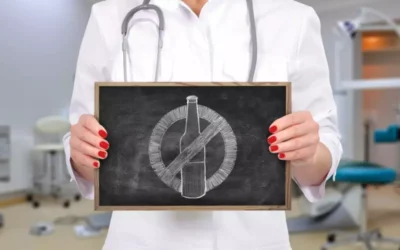And while the drug can be identified in the body, there are no blood or lab tests that can diagnose Xanax addiction. The diagnosis of Xanax addiction is based on whether a person meets certain diagnostic criteria outlined in the DSM-5. Additionally, some people are predisposed to substance addiction, possibly due to genetic factors and altered activity of neurotransmitters in the brain. There are several proposed explanations for why these groups may be at risk.
Treatment for Xanax Addiction
I gritted through another decade or so in and out of mild to moderate gloom, dotted with attempts to climb the well walls with Paxil, Lexapro, and Zoloft. Each of these drugs took weeks or months to kick in but left me with little to no relief. I sat in my psychiatrist’s office, eight failed meds deep into battling my latest round of depression. The fleeting thought of a permanent vacation felt like the next best option.
Effects of Xanax Addiction on Physical and Mental Health
If you’ve taken benzodiazepines at high doses for an extended period, you may experience long-term withdrawal symptoms, also called post-acute withdrawal syndrome (PAWS) or protracted withdrawal. A medical study published in 2017 found that young adults ages 18 to 29 reported the highest rates of benzodiazepine abuse. Younger adolescents, however, appear to be abstaining from many substances of abuse except Xanax. While dependence and addiction are not the same conditions, physical dependence may indicate abuse or addiction to a substance. The signs and symptoms of Xanax withdrawal vary from person to person.
Fake Xanax: Anxiety drug deaths an ‘escalating crisis’ – BBC.com
Fake Xanax: Anxiety drug deaths an ‘escalating crisis’.
Posted: Mon, 04 Feb 2019 08:00:00 GMT [source]
Does Xanax cause a withdrawal effect?
The spring of hope ran dry, and yet I was clinging to a bucket at the end of a thinning rope. I became part of the one-third of depression patients that are called treatment-resistant. The country’s second-largest health system, the Veterans Health Administration, has used contingency management administered by trained staff for more than a decade to treat substance use disorders. When a friend is battling a Xanax addiction, particularly when they are attempting to quit or reduce their intake, several signs indicate they are experiencing withdrawal. These can manifest physically and behaviorally, ultimately deteriorating their health and quality of life.
If you or a loved one has been prescribed Xanax, it is vital to alert your physician to what medications you are already taking before using Xanax to prevent any potentially adverse combinations. After taking Xanax, the peak effects of the drug are typically felt within one to two hours. As an intermediate-duration drug, Xanax stays in a person’s system for 12 to 15 hours.

Snorting meth can damage sinus cavities and nasal passages, and lead to chronic nosebleeds and/or a perpetual runny nose. Smoking meth may lead to respiratory xanax addiction damage and lung complications. Living with treatment-resistant depression is still sometimes a heel-dig into the dirt to stay away from the well’s edge.
How long do Xanax effects last in the body and brain?

Examples of these alternatives include sertraline (Zoloft) and buspirone. But it’s best to talk with your medical professional or pharmacist before using any new drugs while taking Xanax. Xanax produces a calming effect that helps relieve symptoms of anxiety and panic disorder. The half-life of Xanax can be used to figure out how long the drug stays in your body. A drug’s half-life is the time it takes for half of a dose of the drug to leave your system. So it takes about 11 hours for your body to get rid of half of a dose of Xanax.
Xanax Addiction Treatment
Many people also benefit from general therapy to help with things like past traumas, mental health disorders, and stressful situations. This type of benzodiazepine is fast active and very potent, so many people end up using it recreationally. As one of the most commonly abused prescription medications, Xanax is a component in many substance use disorders.
- If the user decides to stop taking Xanax, they may experience withdrawal effects such as anxiety, restlessness, insomnia, and tremors.
- Its effectiveness has been documented in a decade of National Institutes of Health-funded research studies, including randomized controlled trials, the gold standard of medical research.
- They should not be considered for individuals who struggle with overusing Xanax as little accountability is available.
Outpatient Treatment
Those suffering from Xanax addiction and abuse frequently combine the substance with alcohol or other pills — particularly opiates — to get a better high. In addition, approximately 40% of alcoholics regularly abuse Xanax. Alcohol is particularly dangerous when mixed with Xanax because they are both depressants; combining the two https://ecosoberhouse.com/ can lead to an overdose and respiratory failure. They say drugs fill a void, or at least that’s what my therapist thinks. The first time I popped a Xanax was the first time I felt relief from my anxiety disorder… There was something oddly comforting about Xanax — the way it came in many shapes and colors, like peach and blue.
- Regardless of your condition, the first step in recovery is to ask for help.
- Follow the directions on your prescription label and read all medication guides or instruction sheets.
- Tyler was living on the streets when he found help at Project Weber/RENEW, a peer-led harm reduction and recovery group in Providence.
- About 75 percent of deadly benzodiazepine overdoses involve opioids, according to a 2015 study in the American Journal of Preventive Medicine.
- They also include behavioral health professionals such as psychologists and therapists to assist with symptom management.

